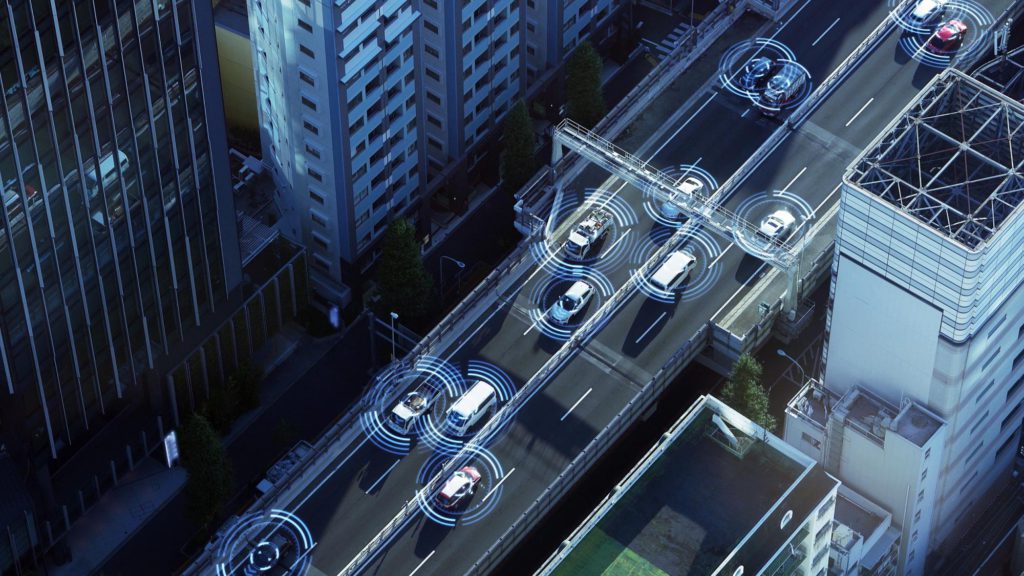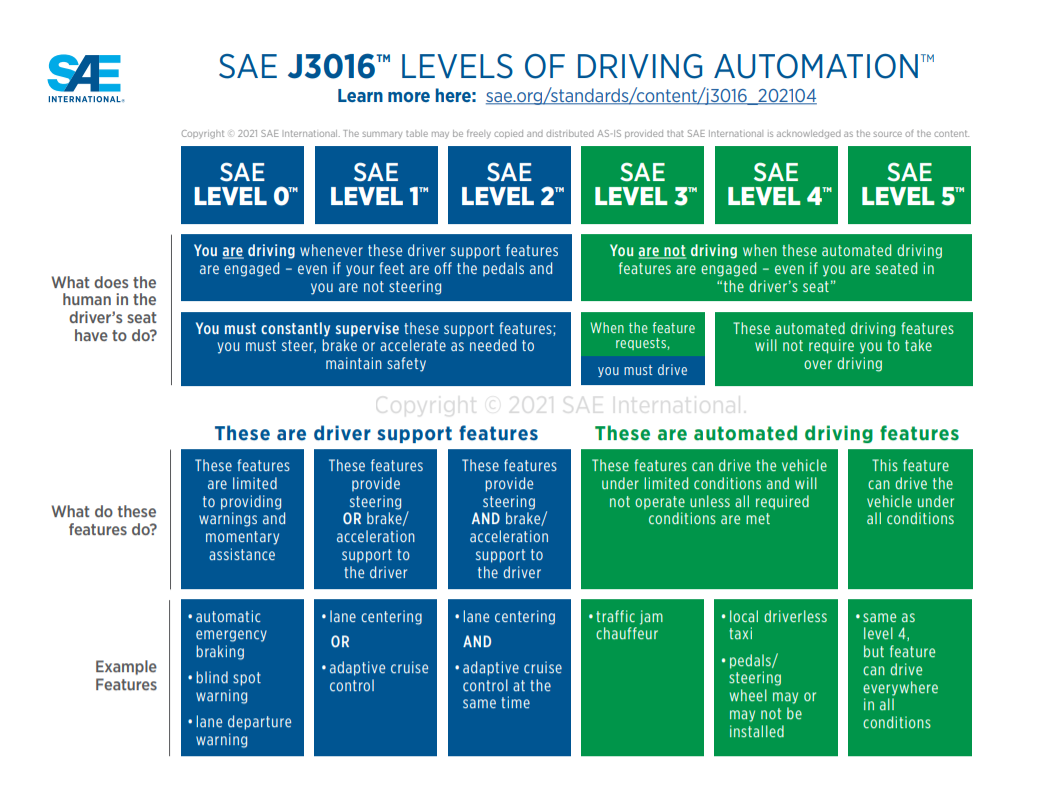Levels of autonomy refined to prevent misinterpretation
11 May 2021

SAE International has updated its levels of autonomy. Together with the International Organisation for Standardisation (ISO), the group has refined the recommended practice to reduce misinterpretation of concepts.
The SAE Levels range from no driving automation (Level 0) to full driving automation (Level 5). The latest update adds several new terms, substantial refinement and clarification of misinterpreted concepts, as well as the restructuring of certain definitions into more logical groupings.
The most significant changes are made to SAE Level 1 and SAE Level 2, now termed as ′driver-support systems’. SAE Levels 3-5 are the only ones now known as ′automated-driving systems’ to help avoid confusion between the different types of technology.
The changes offer further clarity on the differences between SAE Level 3 and SAE Level 4, including the role of the fallback-ready user, the possibility of some automated fallback at SAE Level 3, and the possibility of some alerts to in-vehicle users at SAE Level 4.
They also add additional terms and definitions for two distinct remote support functions: remote assistance and remote driving. There are also terms for users who perform these functions, remote assistant and remote driver. Source: SAE International
Source: SAE International
′As the development of automated-driving technologies continues on a global scale, SAE J3016: Levels of Driving Automation, has evolved to align with the developing technologies and deployment strategies,’ said Barbara Wendling, chairperson for the SAE J3016 Technical Standards Committee. ′Our collaborative partnership with ISO allowed us to expand and refine the recommended practice to better equip international customers with clear, concise and consistent language and definitions.
′Since its launch in 2014, the mobility industry has looked to SAE’s levels of driving automation for citation in official documents where precise language is essential, such as in laws, regulations, guidance documents and standards.’
Levels of confusion
Before these changes, all SAE Levels were seen as levels of full-automation. The clarification now defines between driver-assistance and full-autonomous options.
This confusion was highlighted recently, with the UK announcing a ′step forward’ on the road to legalising driver-assistance technology. While many media outlets proclaimed this was allowing ′self-driving’ vehicles on the roads, the reality is that Automated Lane-Keeping Systems (ALKS) is not automated but an assisted-driving technology, relying on the driver to take back control.
′A widespread and effective ongoing communications campaign, led by the automotive industry and supported by insurers and safety organisations, is essential if we are going to address current and future misconceptions and misuse,’ said Matthew Avery, director of research at Thatcham Research.
SAE International is therefore aiding this campaign by refining its levels of driving automation. It is hoped that by doing this, consumers will have a better understanding of when they need to remain in control of a vehicle and when they can let onboard systems do all the work.
While carmakers are developing Level 4 and Level 5 systems, there is no fully-autonomous system at this standard on the roads yet. The closest is Level 3, which is defined as ′conditional-driving automation.’ These systems can drive the vehicle under limited conditions when all required options are met, but the driver must be ready to take control when required.
This raises questions about the viability of developing Level 3 technology. The cost associated with creating this technology, when the driver still needs to be ready to take over, is putting some carmakers off. Instead, they are looking to skip Level 3 and go straight to Level 4 and Level 5.
However, the development of fully-autonomous technology has been impacted by the need to create electrically-chargeable vehicles (EVs) and the COVID-19 pandemic. Where predictions were once saying Level 5 would be prevalent today, it could be many more years before the automotive industry can fully embrace fully autonomous.